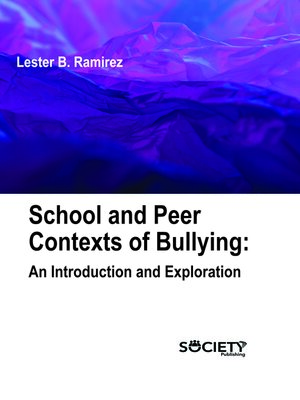
Sign up to save your library
With an OverDrive account, you can save your favorite libraries for at-a-glance information about availability. Find out more about OverDrive accounts.
Find this title in Libby, the library reading app by OverDrive.



Search for a digital library with this title
Title found at these libraries:
| Library Name | Distance |
|---|---|
| Loading... |
Bullying is a common issue in schools today, which calls for practical school and community based bullying prevention and intervention techniques. Nevertheless, only a small number of empirical studies have considered the societal and cultural contexts of this behavior, which has limited our understanding of the phenomenon. Examples of individual characteristics that influence bullying include age and gender. This volume reviews socio-demographic and ecological factors, emphasizing on the definition and prevalence of bullying in schools. The volume suggests that elements at the socio-demographic level, for example, social/psychological health issues and age, gender, including different factors like parental involvement in the child's education, emphasis on academic accomplishment, mass media, parents/guardians, peers, and educators can promote or relieve bullying among students in schools. School peers are also important during adolescence, when there is an increased desire for social acceptance and positive evaluation. Students with supportive friends often feel a higher level of belongingness to their peers, and are less inclined to participate in aggressive conduct like bullying. The authors then draw implications for school bullying and peer victimization assessment, practice, and policy.







